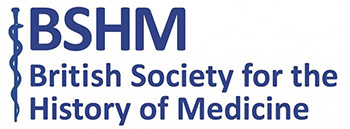
Paris: Comité National de Défense contre la Tuberculose; Quimper: Comité d’Hygiène Sociale du Finistère, [between 1930 and 1939?]. Image Credit: Wellcome Collection, CC BY.
Christmas seals fall into a category known as ‘cinderella stamps’: items that resemble stamps but cannot be used in payment for postage
While the Christmas seal concept has been adopted to raise funds for many different types of charitable organisations, they have most closely been allied to raising awareness of tuberculosis. According to a New York Times article, the concept originated in Denmark in 1904, when a Danish postal worker called Einar Holbøll came up with the idea to sell the penny seals to raise money for children with tuberculosis.
Other countries quickly followed suit with fundraising seals being produced to support tuberculosis causes in Sweden, Iceland and Argentina.
At the time, tuberculosis was still one of the major causes of death globally. And despite the discovery of the M. tuberculosis bacillus by Robert Koch in 1882, no effective treatment had been found. Organised national efforts to combat the disease were looking for means to raise awareness and financial support for the disease. These campaigns can be seen as some of the very first public health initiatives, in which the financial contributions of ordinary people were used to fund treatment of a disease.

Picture credit: W. Dibb Private Collection.
The first American Christmas seals were produced in 1907 by a Red Cross volunteer called Emily Bissell, who adopted the idea to help raise money for a tuberculosis sanatorium in Delaware that was under the threat of closure if a sum of $300 was not raised.
Although she could not get permission to have the U.S. national postal service to print and distribute the seals, as they had in Denmark, she was allowed to privately sell the seals in the post office lobbies. The seals were such a success they raised over ten times the amount needed and became an annual tradition that raised major funds for The National Tuberculosis Association (now known as the ‘American Lung Association’). The American Lung Association continues to sell their Christmas Seals™. Selling tuberculosis Christmas seals has also funded major disease prevention programmes in countries, such as Canada, through chest X-ray screening or tuberculin tests.
The Cross of Lorraine

National Tuberculosis Association, 1940. Image Credit: Wellcome Collection, CC BY.
Many examples of the Christmas seals created to raise funds for tuberculosis charities contain the symbol of the double-barred cross. Symbolically known as the ‘Cross of Lorraine’, it was adopted as the symbol of the fight against tuberculosis at the International Conference on tuberculosis held in Berlin, 1902.
A French doctor – Gilbert Sersiron – proposed the emblem which had been the banner of Godfrey of Bouillon, one of the leaders of the first Crusades who successfully laid siege to Jerusalem and became it first ruler. In adopting this Crusader symbol, the cross became a symbol of the new, organised anti-tuberculosis ‘crusade’.
Flora Malein
You can read more about postal items and infectious disease in a previous post, here.
Sources used:
The New York Times: https://www.nytimes.com/1989/12/24/style/pastimes-stamps.html
The American Lung Association: https://www.lung.org/get-involved/ways-to-give/christmas-seals/history.html
The Canadian Lung Association: https://web.archive.org/web/20111115234620/http://lung.ca/involved-impliquez/christmas-noel/history-histoire/index_e.php
TB Alert: https://web.archive.org/web/20090302074617/http://www.tbalert.org/about/cross.php
John, Simon (2017). Godfrey of Bouillon: Duke of Lower Lotharingia, Ruler of Latin Jerusalem, c.1060-1100. Taylor & Francis. ISBN 978-1-317-126300.





